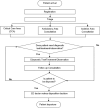Modeling Emergency Department crowding: Restoring the balance between demand for and supply of emergency medicine
- PMID: 33434228
- PMCID: PMC7802975
- DOI: 10.1371/journal.pone.0244097
Modeling Emergency Department crowding: Restoring the balance between demand for and supply of emergency medicine
Abstract
Emergency Departments (EDs) worldwide are confronted with rising patient volumes causing significant strains on both Emergency Medicine and entire healthcare systems. Consequently, many EDs are in a situation where the number of patients in the ED is temporarily beyond the capacity for which the ED is designed and resourced to manage-a phenomenon called Emergency Department (ED) crowding. ED crowding can impair the quality of care delivered to patients and lead to longer patient waiting times for ED doctor's consult (time to provider) and admission to the hospital ward. In Singapore, total ED attendance at public hospitals has grown significantly, that is, roughly 5.57% per year between 2005 and 2016 and, therefore, emergency physicians have to cope with patient volumes above the safe workload. The purpose of this study is to create a virtual ED that closely maps the processes of a hospital-based ED in Singapore using system dynamics, that is, a computer simulation method, in order to visualize, simulate, and improve patient flows within the ED. Based on the simulation model (virtual ED), we analyze four policies: (i) co-location of primary care services within the ED, (ii) increase in the capacity of doctors, (iii) a more efficient patient transfer to inpatient hospital wards, and (iv) a combination of policies (i) to (iii). Among the tested policies, the co-location of primary care services has the largest impact on patients' average length of stay (ALOS) in the ED. This implies that decanting non-emergency lower acuity patients from the ED to an adjacent primary care clinic significantly relieves the burden on ED operations. Generally, in Singapore, there is a tendency to strengthen primary care and to educate patients to see their general practitioners first in case of non-life threatening, acute illness.
Conflict of interest statement
The authors have declared that no competing interests exist.
Figures









Similar articles
-
Development of emergency department load relief area--gauging benefits in empirical terms.Simul Healthc. 2012 Dec;7(6):343-52. doi: 10.1097/SIH.0b013e31825ded80. Simul Healthc. 2012. PMID: 22960699
-
Causes of Emergency Department Overcrowding and Blockage of Access to Critical Services in Beijing: A 2-Year Study.J Emerg Med. 2018 May;54(5):665-673. doi: 10.1016/j.jemermed.2018.02.009. Epub 2018 Mar 21. J Emerg Med. 2018. PMID: 29573904 Free PMC article.
-
The relationship between inpatient discharge timing and emergency department boarding.J Emerg Med. 2012 Feb;42(2):186-96. doi: 10.1016/j.jemermed.2010.06.028. Epub 2010 Oct 2. J Emerg Med. 2012. PMID: 20888163
-
International perspectives on emergency department crowding.Acad Emerg Med. 2011 Dec;18(12):1358-70. doi: 10.1111/j.1553-2712.2011.01235.x. Acad Emerg Med. 2011. PMID: 22168200 Review.
-
Emergency department crowding, part 1--concept, causes, and moral consequences.Ann Emerg Med. 2009 May;53(5):605-11. doi: 10.1016/j.annemergmed.2008.09.019. Epub 2008 Nov 22. Ann Emerg Med. 2009. PMID: 19027193 Review.
Cited by
-
Patient and hospital characteristics predict prolonged emergency department length of stay and in-hospital mortality: a nationwide analysis in Korea.BMC Emerg Med. 2022 Nov 21;22(1):183. doi: 10.1186/s12873-022-00745-y. BMC Emerg Med. 2022. PMID: 36411433 Free PMC article.
-
They Told Me "This Isn't a Hotel": Young People's Experiences and Perceptions of Care When Presenting to the Emergency Department with Suicide-Related Behaviour.Int J Environ Res Public Health. 2022 Jan 26;19(3):1377. doi: 10.3390/ijerph19031377. Int J Environ Res Public Health. 2022. PMID: 35162409 Free PMC article.
-
The Contribution of Real-Time Artificial Intelligence Segmentation in Maxillofacial Trauma Emergencies.Diagnostics (Basel). 2025 Apr 12;15(8):984. doi: 10.3390/diagnostics15080984. Diagnostics (Basel). 2025. PMID: 40310392 Free PMC article.
-
Identifying indicators influencing emergency department performance during a medical surge: A consensus-based modified fuzzy Delphi approach.PLoS One. 2022 Apr 21;17(4):e0265101. doi: 10.1371/journal.pone.0265101. eCollection 2022. PLoS One. 2022. PMID: 35446857 Free PMC article.
-
Main Features and Control Strategies to Reduce Overcrowding in Emergency Departments: A Systematic Review of the Literature.Risk Manag Healthc Policy. 2023 Feb 21;16:255-266. doi: 10.2147/RMHP.S399045. eCollection 2023. Risk Manag Healthc Policy. 2023. PMID: 36852330 Free PMC article. Review.
References
MeSH terms
LinkOut - more resources
Full Text Sources
Other Literature Sources

